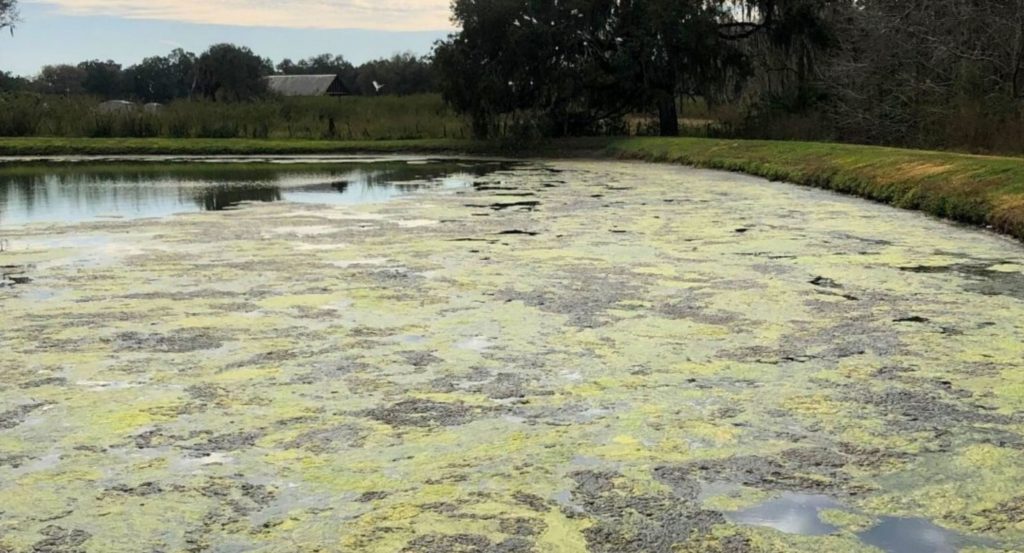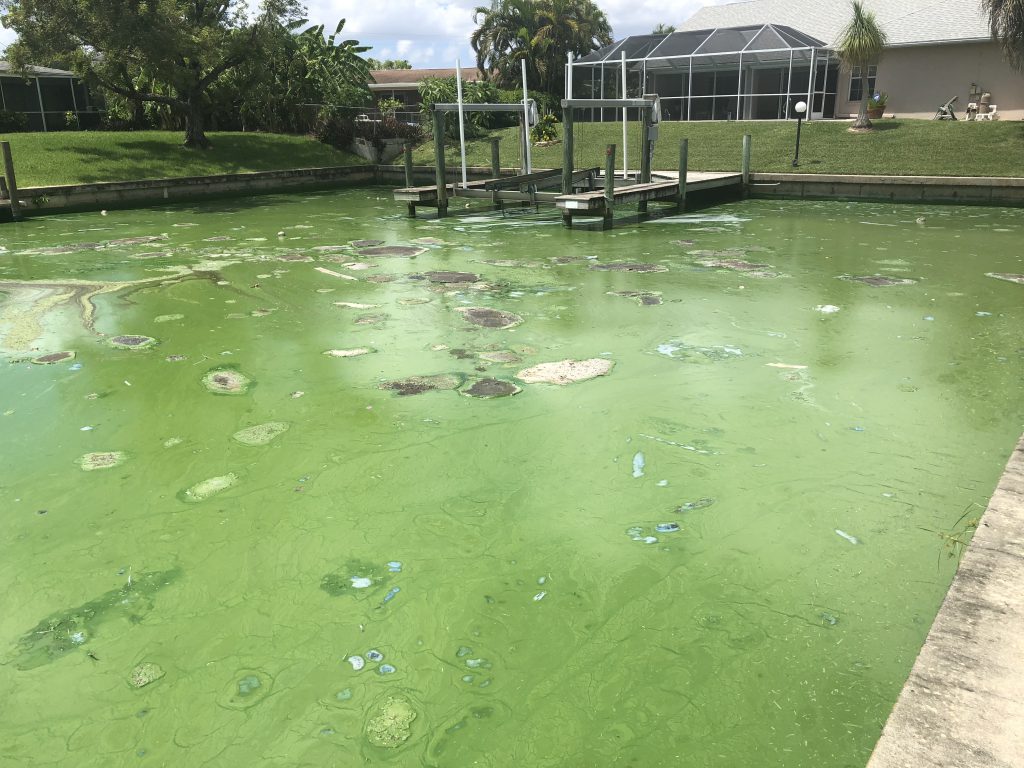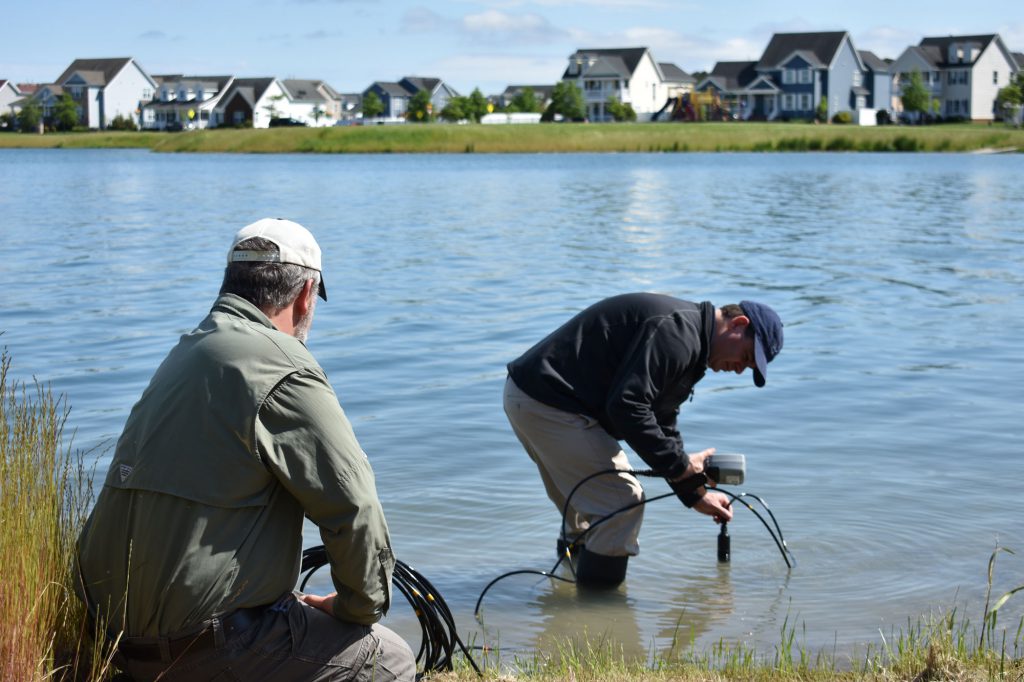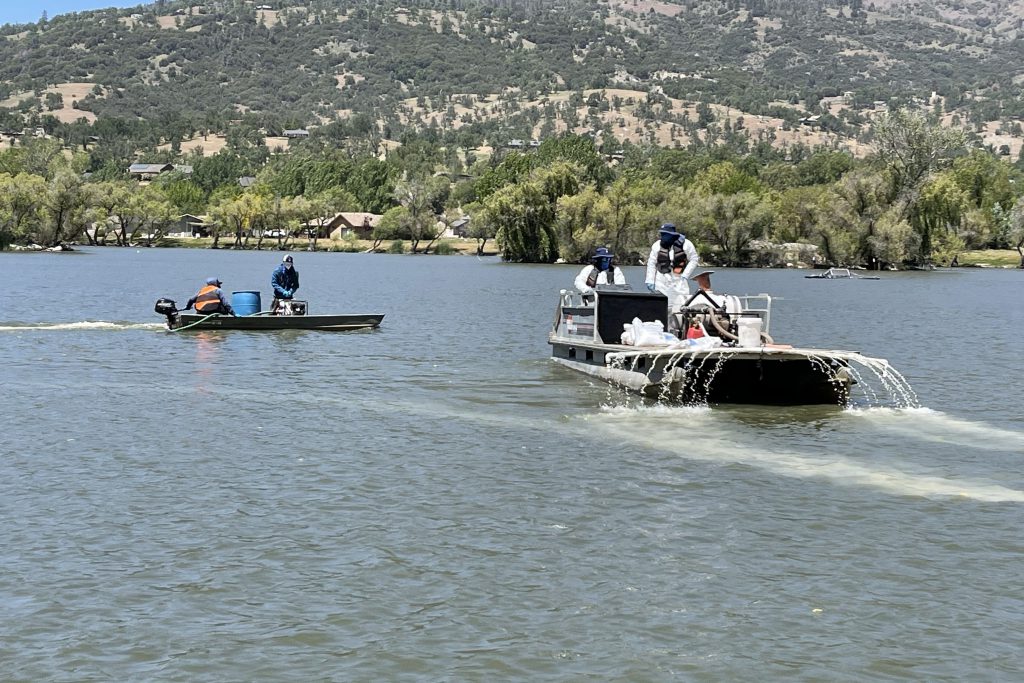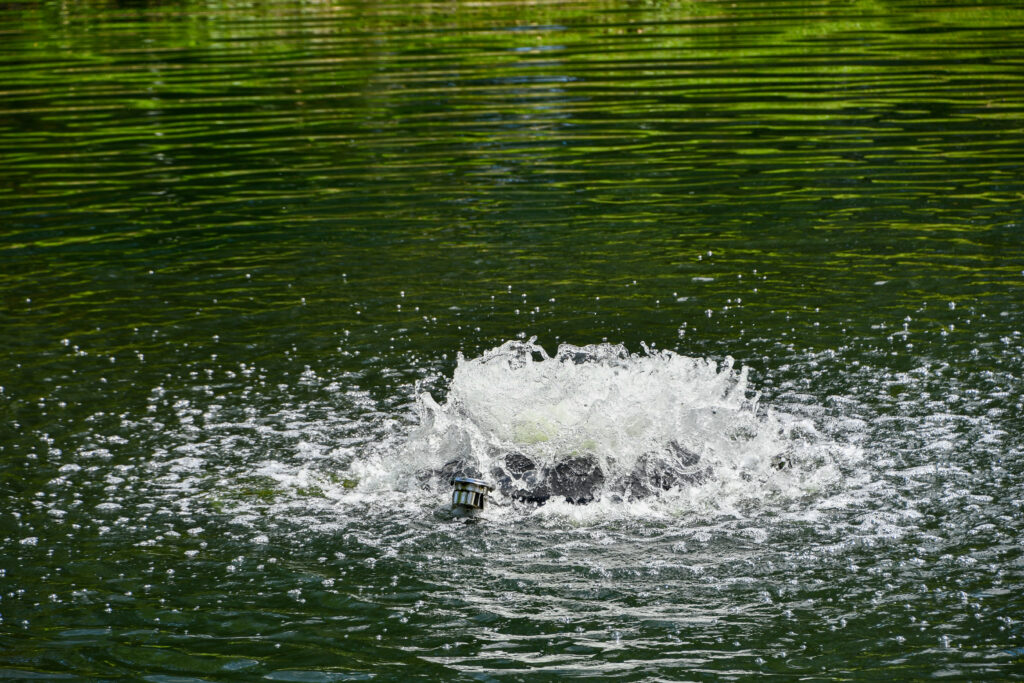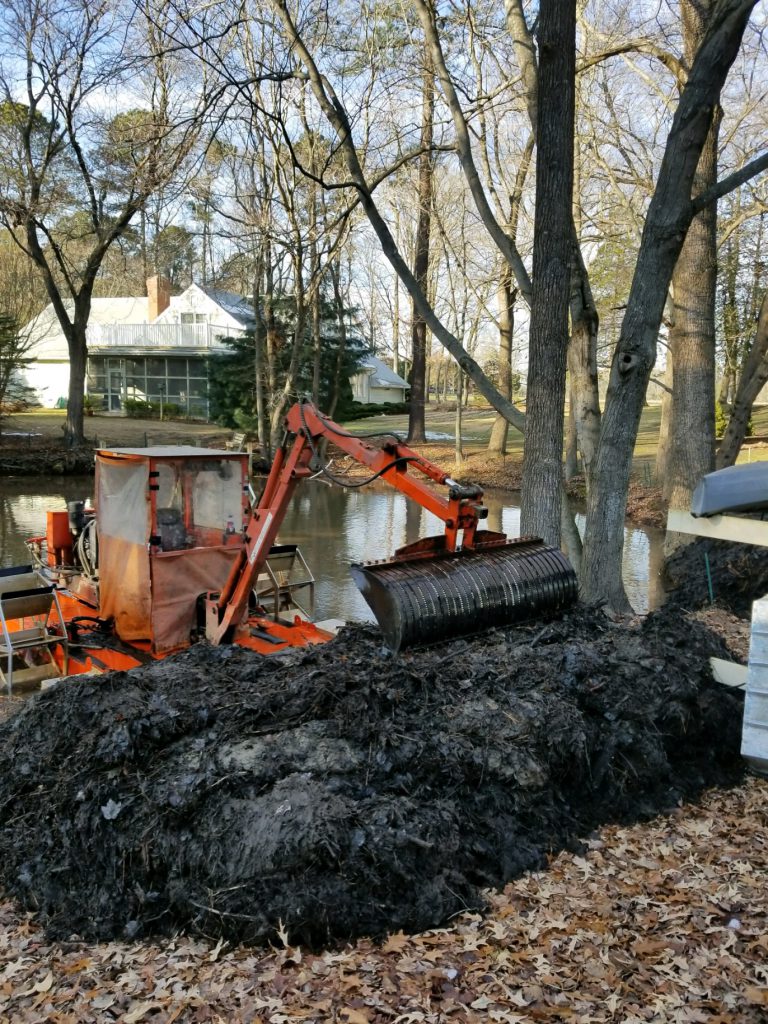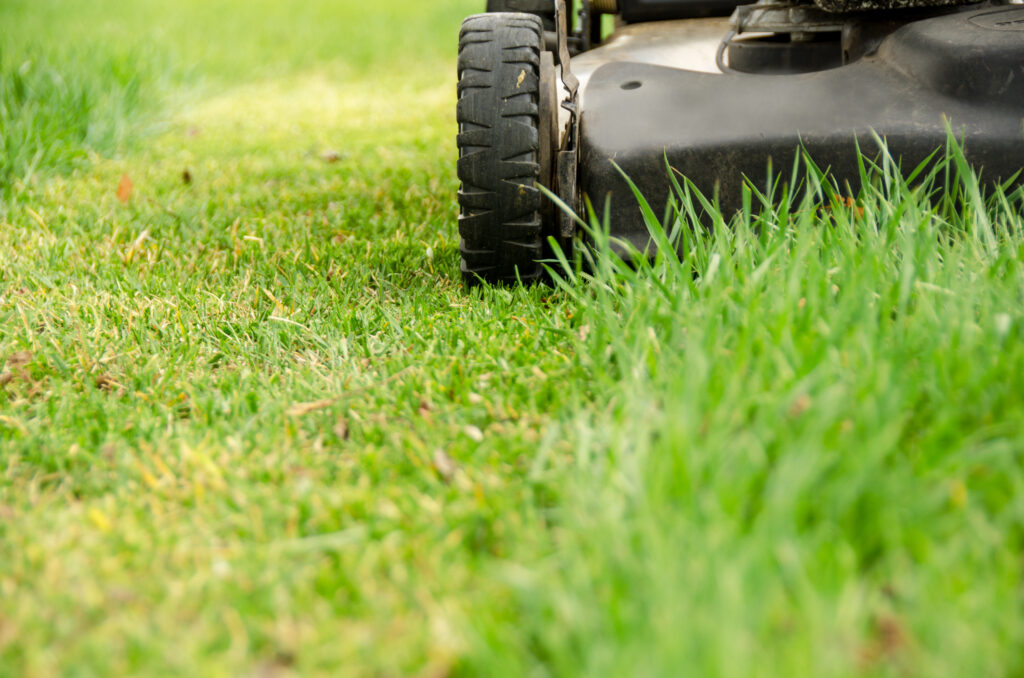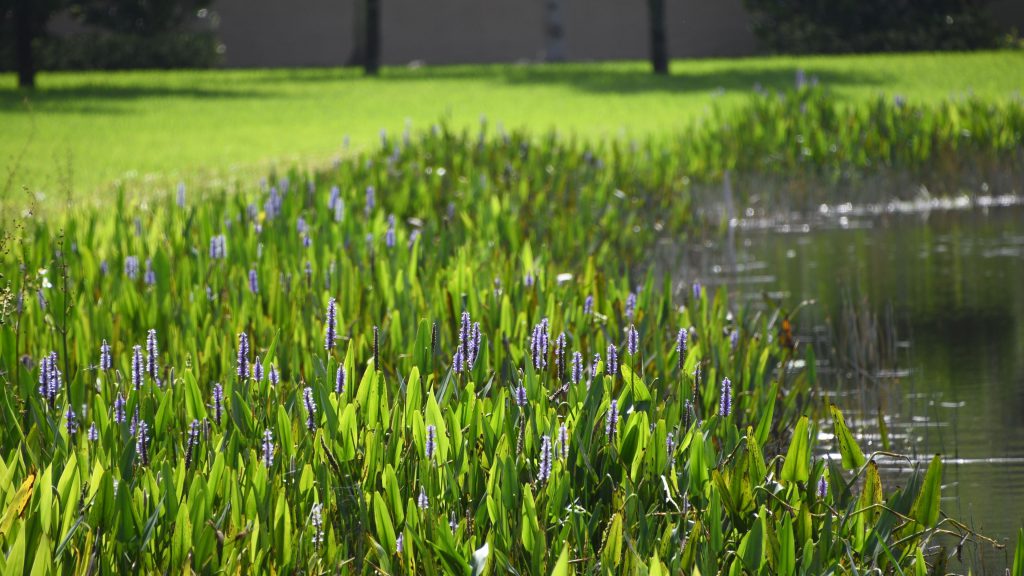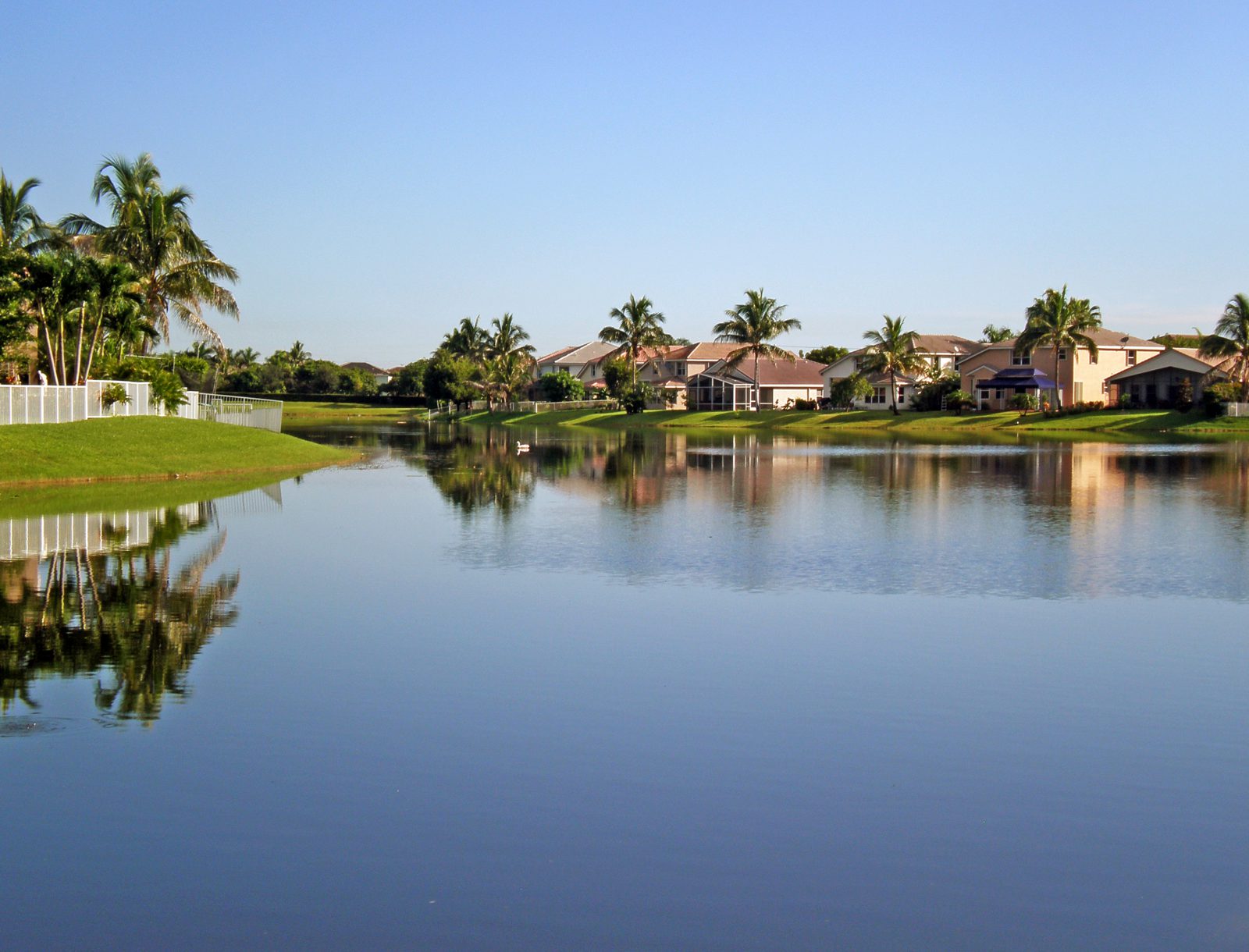
Lake and Pond Nutrients: How much is too much?
Lakes and ponds are some of the most important ecosystems on the planet, providing habitats for a wide variety of species, enhancing communities, and playing a critical role in the management of stormwater runoff. The health of these aquatic systems is largely determined by the availability and balance of nutrients. However, if this balance is disturbed, it can lead to serious problems.
As the foundation of the food web, nutrients like nitrogen and phosphorus sustain the growth of beneficial bacteria, microorganisms, fish, and native plants that serve as food and refuge for wildlife. In the right quantities, nutrients support a diverse and healthy ecosystem. In excess, they can trigger a deterioration process called eutrophication.
What is eutrophication?
Eutrophication occurs when excess nutrients stimulate an overgrowth of nuisance weeds and algae, which eventually die off and decompose in unnatural quantities. When large amounts of organic matter decompose, dissolved oxygen can become depleted, making it less available to aquatic life. This decay also releases additional nutrients into the water, creating a vicious cycle of excess growth and die-off that degrades the ecosystem over time.
Harmful Algal Blooms & Excess Nutrients
Eutrophication has far-reaching impacts on aquatic environments. Nutrient-rich waterbodies are more likely to develop Harmful Algal Blooms (HABs) also referred to as cyanobacteria or blue-green algae. Under the right conditions, HABs are capable of producing toxins that are deadly to pets, livestock, and wildlife, and can contribute to dangerous human health problems. Furthermore, excess nutrients can have economic consequences. For example, HABs may impede water use for recreational activities like swimming and fishing, which can hurt local tourism. Unsightly waterbodies may reduce home values for private property owners or residents in homeowners associations.
The Impact of Excess Nutrients
Explosive aquatic weed growth can also endanger humans and animals by entangling boat motors, recreational equipment, and even swimmers. Nuisance weeds are known to clog important stormwater equipment, which often leads to flooding and subsequent shoreline damage during storms.
Though eutrophication is a natural process that slowly occurs over decades, it is expedited by human activity through pollution, urban development, poor agricultural practices, and irresponsible landscaping habits. In just a short time, an imperceptible pond nutrient imbalance can lead to some big headaches – and even liabilities related to flooding, toxins, and shoreline damage. That’s why it’s crucial to understand the function of nutrients in a waterbody and how to safely manipulate nutrient levels for a healthier ecosystem.
Restoring Balance in Lakes & Ponds
- Aquatic Weed Management
- Toxic Algae Management
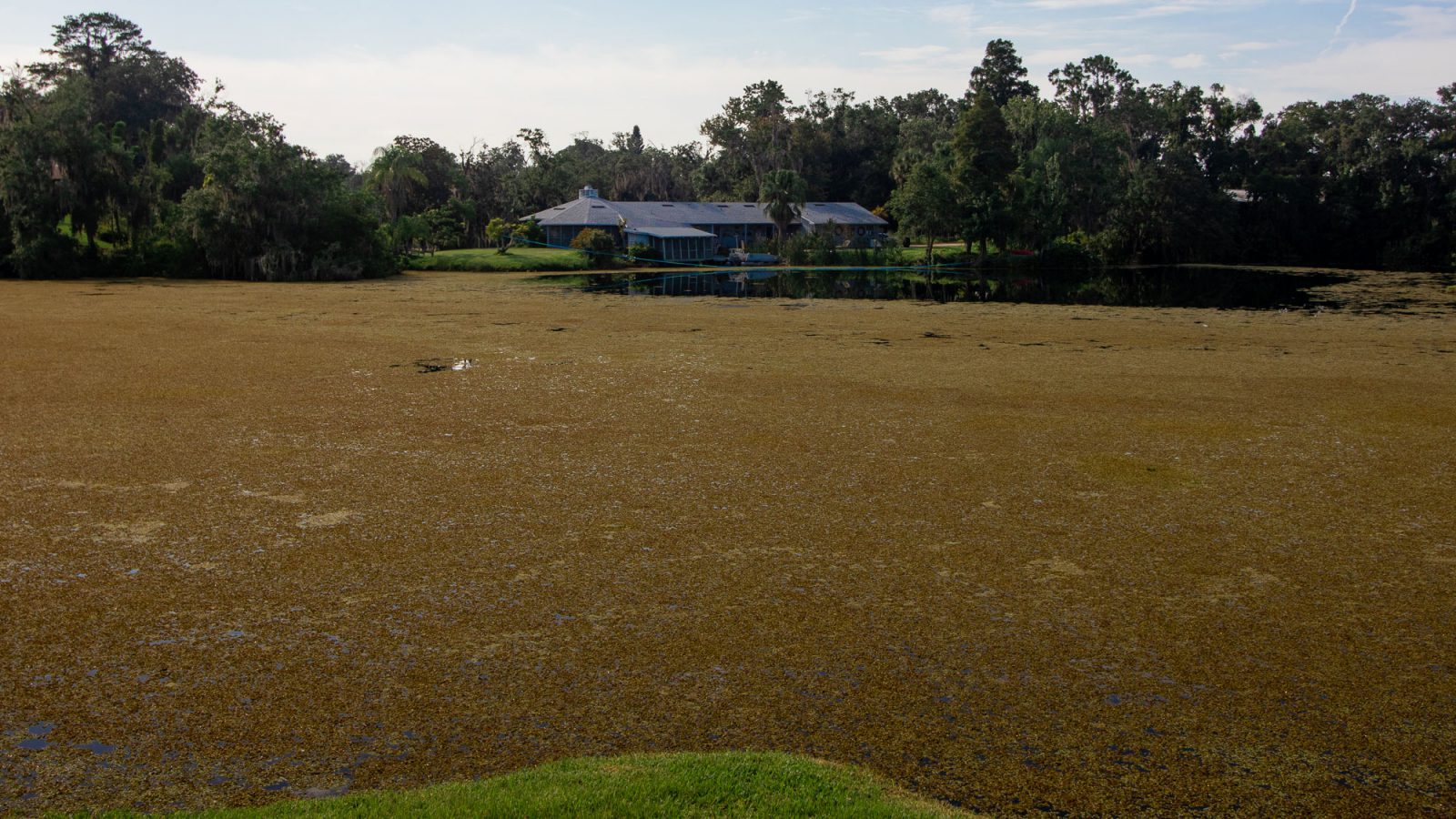
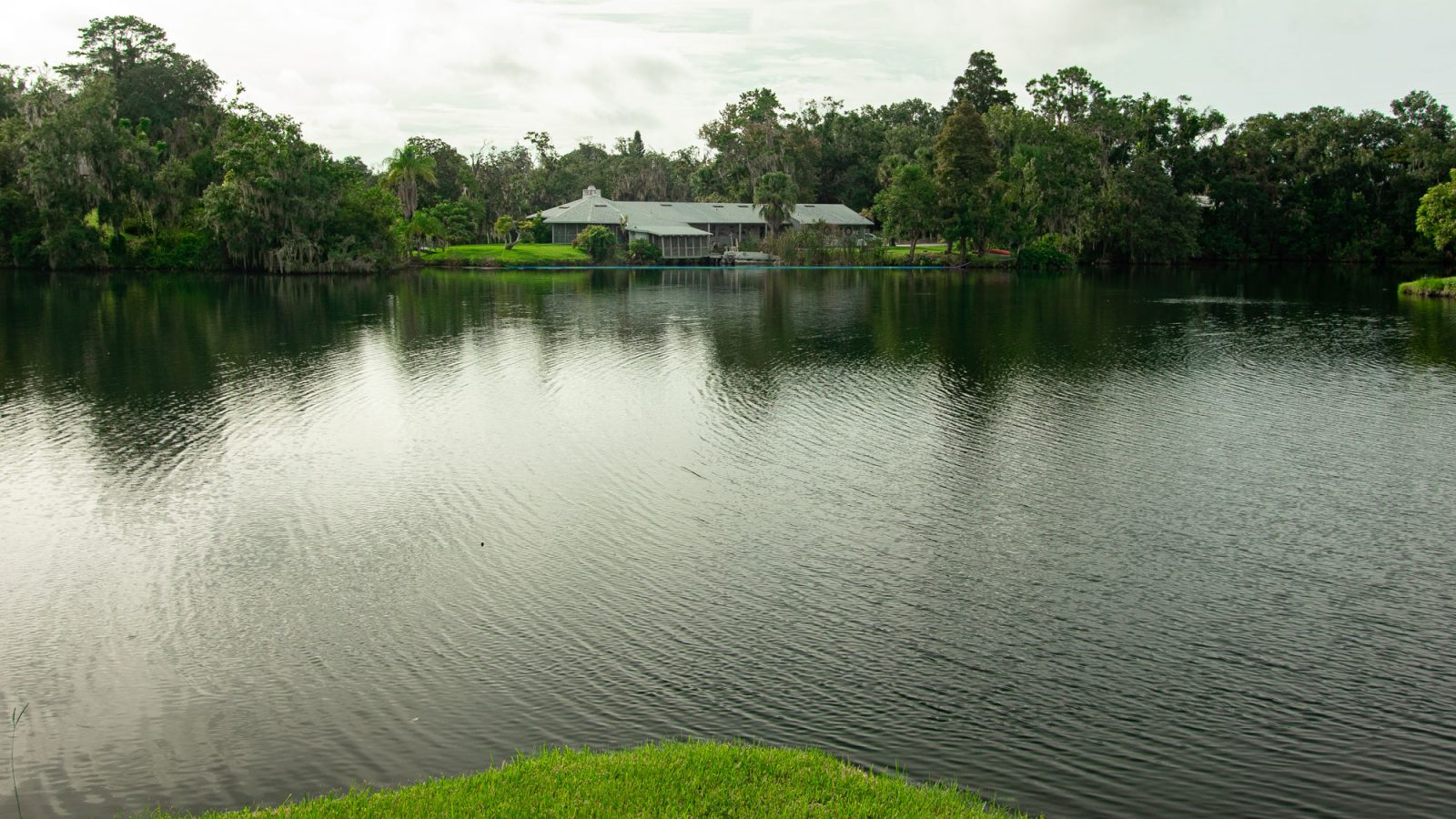
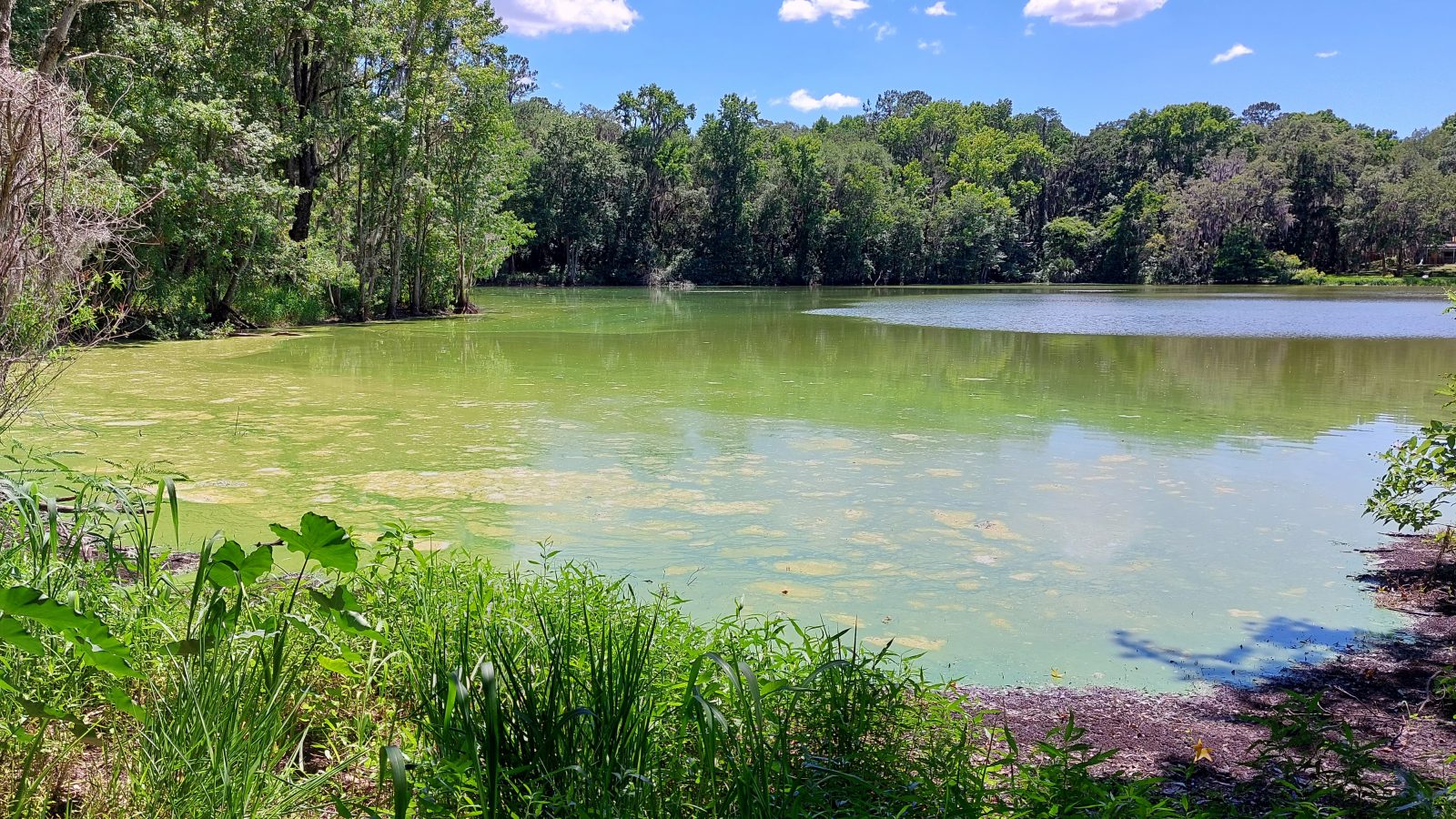
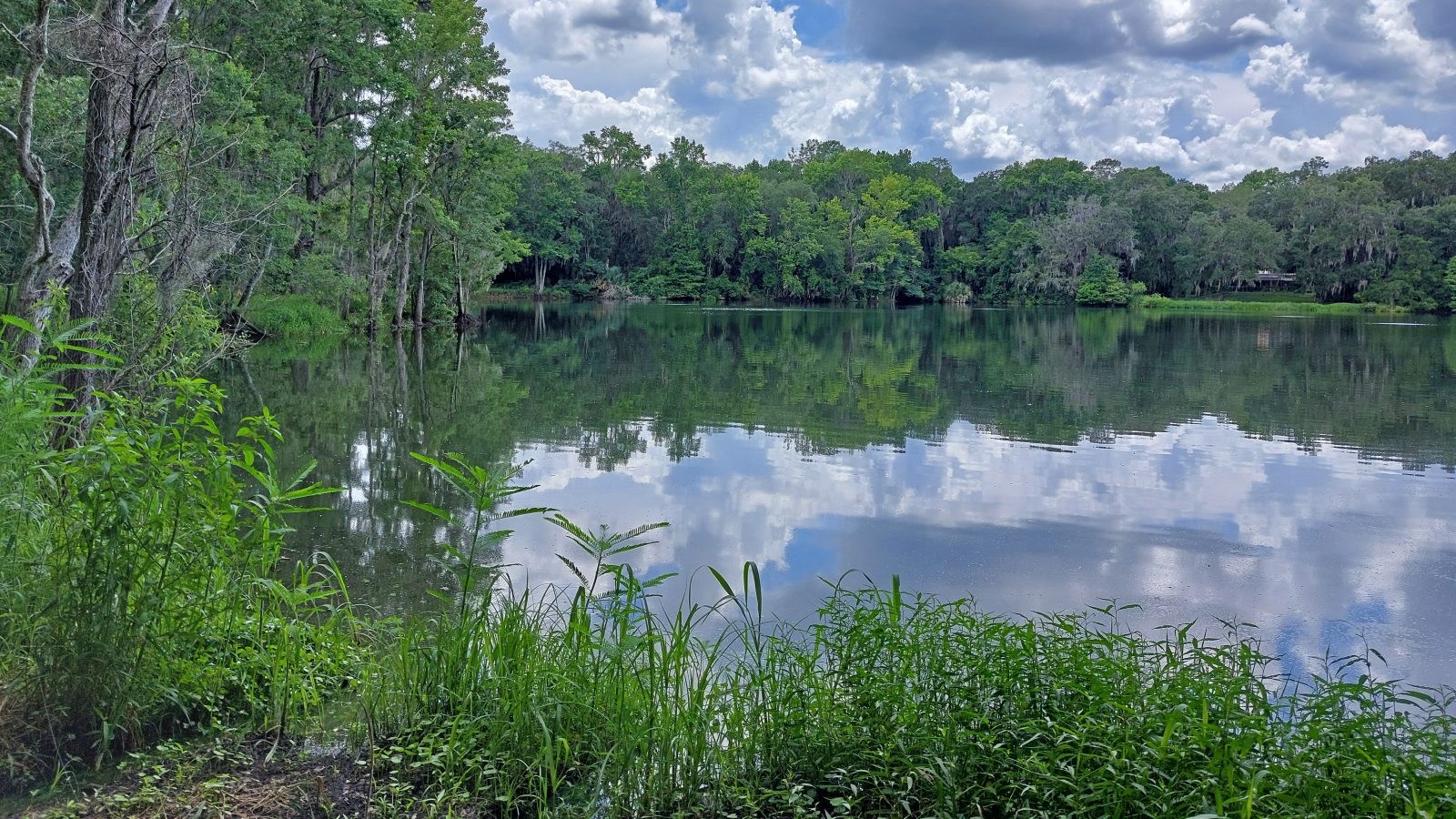
Nutrients: How much is too much?
So how much is too much? The appropriate level of lake and pond nutrients depends largely on the unique characteristics of an aquatic ecosystem, how it is used, and stakeholder goals. Waterbodies used for aesthetic purposes generally require fewer nutrients. Achieving clear, sparkling water means limiting the food source that fuels weeds and algae. Trophy fisheries, on the other hand, require increased nutrients to support a robust and productive fish population that will last for generations. Every waterbody is different, but an aquatic expert can help determine exactly what yours needs to reach its full potential.
Water Quality Testing
Through in-depth water quality testing, your aquatic expert will develop a detailed profile of your waterbody revealing total nitrogen and phosphorus, as well as other characteristics like dissolved oxygen, pH, alkalinity, conductivity, and ammonia. Similar to a blood sample, water tests provide a window into the overall health of the waterbody and illuminate areas that require extra attention.
Nutrient Remediation Tools
If too high, a variety of solutions can be used to bring pond nutrients down to healthy levels. Sustainable nutrient remediation products like Phoslock, Alum (aluminum sulfate), and EutroSORB work similarly to “capture” excess pond and lake nutrients in the water column or bottom sediments, limiting their effects on the ecosystem.
Increase Dissolved Oxygen Levels
Other tools like beneficial bacteria can aid with the natural decomposition of muck and debris that accumulate at the bottom of the waterbody, helping to maintain balanced dissolved oxygen levels and limit the release of excess nutrients. Floating fountains and aerators can further increase dissolved oxygen and ensure it is uniformly circulated throughout the water column.
Remove Nutrient-Rich Muck
Physical removal of pond weeds and muck can also help reduce pond nutrient levels. A mechanical hydro-rake is an excellent tool to scoop out nutrient-rich material and deposit it on shore for disposal. When conducted every 3-5 years, hydro-raking can help slow and even reverse the process of eutrophication. If nutrient-rich materials have accumulated beyond manageable thresholds, dredging may be required as a last resort option to reestablish the waterbody’s holding capacity.
Limit Nutrients from Entering the Water
In addition to the nutrients released by decomposing plants and muck, lake and pond nutrients also come from external sources that flow into the water during rainstorms. These include pet waste, trash, grass clippings, and other yard debris. Taking steps to properly bag and dispose of these organic materials, as well as avoiding nutrient-rich lawn and garden fertilizers, can go a long way in preserving the health of local waterways.
Plant Native Vegetation Along the Shoreline
Introducing native vegetation around the perimeter of a waterbody can also help “filter” pond nutrient sources as rainwater flows into the aquatic ecosystem. This beneficial buffer has the added benefit of containing shoreline sediment with a complex root system. If shoreline deterioration has become too unsightly or dangerous to tread on, it can be reconstructed using modern bioengineering techniques for many years of stability.
Enjoy Your Water for Decades with Proactive Management
Lakes and ponds are incredible assets. They add beauty and value to our communities, and provide opportunities to connect with friends, family, and nature through fishing, kayaking, swimming, bird watching, and other outdoor fun. Stakeholders are often surprised by how closely nutrients are linked to problems that ruin these activities – weeds, algae, muck, flooding, bad odors. Proactively maintaining aquatic ecosystems through nutrient management and other sustainable solutions will help preserve them for decades and generations to come.
Ready to restore balance to your waterbody? Get started with an Annual Management Program.
SOLitude Lake Management is a nationwide environmental firm committed to providing sustainable solutions that improve water quality, enhance beauty and preserve natural resources.
SOLitude’s team of aquatic scientists specializes in the development and execution of customized lake, stormwater pond, wetland and fisheries management programs. Services include water quality testing and restoration, algae and aquatic weed control, installation and maintenance of fountains and aeration systems, shoreline erosion control, muck and sediment removal and invasive species management. SOLitude partners with homeowners associations, golf courses, private landowners, businesses and municipalities. SOLitude Lake Management is part of Rentokil, a leading business services company, operating across the United States, Canada and Puerto Rico.
For more information, visit SOLitude Lake Management at solitudelakemanagement.com, and connect on Facebook, LinkedIn and Twitter.








